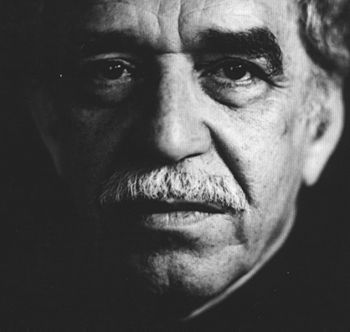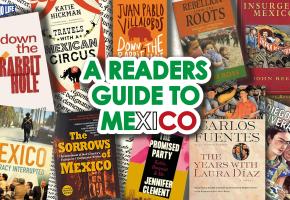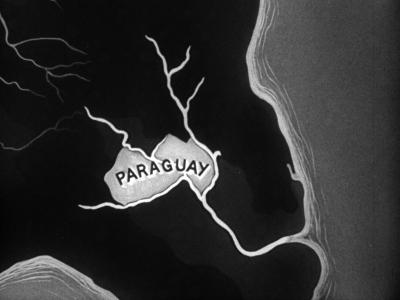Many years after it had first been written about, one Colonel Aureliano Buendía’s discovery of ice – a distant memory whilst he faces a firing squad – was to continue causing quite a stir throughout South American literary circles ...
The subsequent content of Gabriel García Márquez’s crowning text, Cien Años de Soledad (One hundred years of solitude), is considered the zenith of Spanish American literature. There is no doubt that an idiosyncratic, exciting new style of writing was born. However, the upshot of magical realism – actually ‘created’ in the Latin American context by the Cuban writer Alejo Carpentier - and the international accolades cast upon Márquez is such that other Colombian writers have often been labelled cheap imitations if they resemble his style in any way. And those who attempted to deviate from this style found themselves unable to break the, perhaps ironically, rigid structure moulded for them by the international book market.
“It cannot be denied that the man is a genius. He is not to blame for the poor, boring generation of writers that followed him,” laments Andrés Felipe Solano, the Colombian author, included on the Granta list.
Postcolonial critics frequently debate the political incorrectness of the term ‘magical realism’: the magic / realism binary posits magic as the lesser term, and thus imposes a system of order belonging to a colonial power onto a subjugated social system. The uncanny is ‘magical’, fantasy, and therefore inferior, not based in the ‘real’.
Appropriate or not, what cannot be denied is that the global popularity el Gabo has condemned other Colombian artists to the cruel fate of existing in the shadows, just like José Arcadio Buendía, until someone else successfully invents the memory loss machine found within Macondo, and uses it on all Latin American literature fans.
Elsewhere in the Americas other authors persevere. The Chilean Roberto Bolaño carves out a new crime thriller niche for Latin American authors. Brazilian Paulo Coelho continues to win acclaim for the innovative dissemination of his literature through file sharing: his tone is more often than not one of optimism. If writing beyond Macondo is possible, what are Colombia’s other literary offerings that have, over the years, been denied critical acclaim.
The Descendants of Gabo
Whilst accepting the Nobel Prize for literature this year, Peruvian author Mario Vargas Llosa, a contemporary of el Gabo and another who was responsible for the Latin American literary boom, commented that politics and violence were an integral part of the Latin American experience, and could not be avoided in its literature. The Swedish Academy cited the polemic writer for his ‘trenchant images of the individual’s resistance, revolt and defeat’.
Whilst both violence and despotic politics are omnipresent in Marquez’s fabled town, other Colombian authors deal with the same subject matter; nevertheless, rather than resisting, revolting and defeating, many of their protagonists are more likely to succumb, obey and support.
Fernando Vallejo’s La Virgen de los Sicarios focuses on the exploits of an expat grammarian supposedly appalled by the state of affairs in his native Colombia, who submerges himself into the comunas (slums) and forms sexual relations with twosicarios (contracted child assassins), Alexis and Wilmar, in the former cartel haven Medellín.
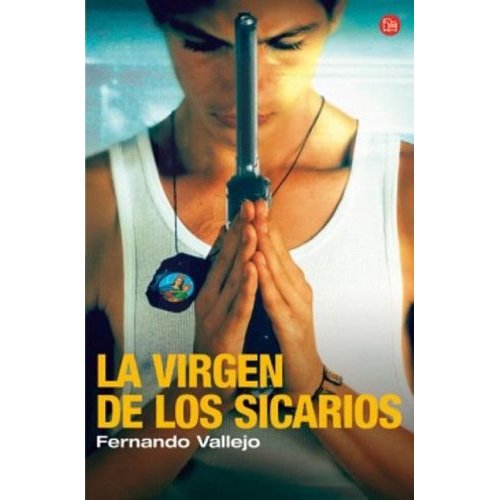
Violent it undoubtedly is, and whilst traditional politics seems to be symbolically rejected, another form of tyrannical rule is explored – the depoliticised, motorised reign of terror triggered by the child killer. Vallejo rejects the Colombian leitmotif of the house – which was the original title (La casa) for Márquéz’s novel – in this unromantic love story as the sicario youth propel themselves from the slums on the outskirts towards their targets in the centre of Medellín, and into a premature grave.
Emilio and Antonio, the two male protagonists of Rosario Tijeras, display a similar fascination for the eponymous femme fatale of Jorge Franco’s novel. The two young gents spot Rosario in a nightclub and are instantly seduced as she is bathed in the halogenic neon lights of a rumba paisa. What follows is another descent into the machinations of the lifestyle of a contract killer, this one famed for French kissing her victims moments before they are sacrificed. Whereas Vallejo’s novel is more localised, Franco introduces us to the full panorama of the sicarios, their families, customs and mafiaesque network.
Violence in the blood?
Blood splotches the pages of Franco’s novel and we cannot help but wonder whether an author is attracted to this subject matter because of a deeply felt social responsibility to address it, or through a perverse attraction to a tainted glamour that cannot help but fascinate. In an interview with Candela, prize winner Andrés Felipe Solano affirmed that ninety five percent of writers that deal with violence do so with a very immediate perspective and give very poor accounts of what they find. When asked whether Colombian writers were attracted to violence, he referred to the Brazilian author Rubem Fonseca who claimed it was an obtuse accusation,
"It’s like blaming Richter for the earthquakes. All I do is measure violence."
The cause of violence in Colombia consistently provokes heated debate: the respected sociologist William Ospinamaintains that Colombia suffers from the insomnia and memory loss detailed in Márquez’s novel rendering violence an undesired legacy of their culture, whereas others like Daniel Pécaut claim that he is guilty of concreting a collective memory obsessed with a perpetual violence that curses the nation. Whilst both Franco and Vallejo glamourise violence to a certain degree, they both go against the grain of neglecting it. Vallejo especially attempts to break the passivity and lethargy that arise as a result of violence and fear, and in some sense the praise given to Vargas Llosa is applicable to him also: both give cartographic descriptions of the structures of power.
What Lies Beneath - Colombia's Unsung heritage
A country’s literature will always be used as a tool to define national identity, and in turn its politics of power. José Eustasio Rivera's cannonical La vorágine (The vortex) is a novel from the twenties that takes us out of the cities and maps the perils of industry, in the form of rubber tapping, and the wild core of the Colombian jungles where the protagonist is famously ‘devoured’ by nature. Like Conrad’s Heart of Darkness it is also a novel that attempts to use a journey into the unknown as a metaphor for a journey into the blackness of man’s heart.
Many have come to mock the novel for its two dimensionality, exposing superficial insecurities to do with the indigenous, the threat of women and the unforgiving tropical landscape. And yet, read between the lines, the melodramatic tone - reminiscent of Quijote for its use of hyperbole - undermines any authorial authority and suggests that Rivera’s intention was to mimic neo-colonial tales and other European grand narratives of the nineteenth century, and to subtly let the mask slip. His protagonist becomes ridiculous. Once again, what appears to be a straightforward novel offers the reader far more than initially meets the eye and another commentary on who rules whom within Colombia.
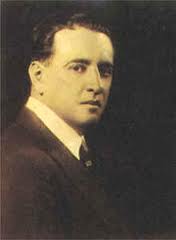
Other novels that have been discarded with time due to their allegedly facile nature include Las estrellas son negras (The stars are black) by Afrocolombian writer Arnoldo Palacio. The melancholic image of the black star perfectly describes the tone of this novel: a diatribe on the poverty faced by black Colombians in the Chocó region on the Caribbean coast during the forties. Surprisingly perhaps, Márquez criticised the author’s racial resentment, the lack of humanity displayed by its protagonist and its technical mediocracy. Any reader intent on gaining a full insight into Colombian literature should be inclined to disagree: racism is still rife within Colombia and is therefore deservedly discussed; the protagonist is stripped of ‘personality’ due to his tough circumstance and is understandably po faced; what is actually created is a private linguistic universe, rich in local dialect and highly expressive and sincere.

Authors of the capital
So far the texts have been based in Medellín, the coast and within the depths of the jungle. We make a detour past the obvious city, Bogotá, and pull into Cali for our next author. Cali is humid, dusty and famed for the ability of the locals to dance a fierce salsa. Many dubbed the caleño Andrés Caicedo as the nemesis of García Márquez and his much reputed novelQué viva la música! (Long live music!) as an Oedipal, cathartic killing of the father. Like Palacios writers of the seventies generation gained a new expressiveness, only this time through a new irresponsibility for they no longer felt obliged to directly talk about the land, civil war or politics as identity. Caicedo instead focuses on the ‘primitive’ forces of dance, sexual promiscuity and drugs, in what appears to be a celebration of youth culture and dissent.
Nevertheless, Vargas Llosa’s affirmation turns prophecy as the female protagonist, la mona, is soon immersed in a brutal, violent environment and politics once again shines through – this time for its textual absence. These two themes, it would seem, return and repeat themselves ad nauseam. La mona’s inability to find solace in her solitude as a lonely prostitute in a bedsit opposite a bar acts a precursor for another author who has been deemed a true innovator of Colombian fiction.
Despite recognizing that Colombian authors often do, Solano insisted in the interview with Candela that writers are not obliged to write about any specific theme. Literature is the kingdom of absolute liberty, anyone can write about anything they like or at least that is how I see it. A Latin American author has no reason to write about a dictator in order to be considered a writer in their own right.
Caicedo and Solano’s experimentations with freedom also apply to Efraím Medina Reyes. Técnicas de masturbación entre Batman y Robin (Masturbation techniques between Batman and Robin) is a gruelingly postmodern affair, evident in its fragmented storyline scattered with lists, cinematic scripts and constant digressions from any conventional chronology. Like la mona, the protagonist Sergio Bocafloja uses direct and obscene language and lurks amongst the marginalized. His interest is chaos, reflecting his bitter world view, marked by an overwhelming, atomised solitude. Such a barrage of styles and influences denotes as much a crisis of identity as it does a desire for something new.

Whether this solitude is an exclusively Colombian sentiment, or the etchings of modern isolation, will not be debated in this article. As for the relative onslaught of magic realism, Reyes was once quoted as suggesting that Márquez might consider “donating himself to a museum”; and yet, what becomes evident is that his influence is felt even to this day, perhaps most strongly from those who reject him outrightly. No matter the style Vargas Llosa’s affirmation rings true, that Latin American literature charts a tussle between violence and politics and thus the structures of power. Even when they are supposedly absent, and the authors experiment with a new found ‘liberty’, they are often all the more present. Whether it is through the outlandish world of Macondo, Vargas Llosa’s feasting goats, or rebellious teenagers, an artistic sensibility will always touch upon similar issues in Latin America, and participate in its construction.
Recently in New York, three Latin American dramaturges were announced as winners of an international prize to have their work directed as Off Broadway productions. In England, a decision made by Granta magazine has seen five Spanish-language authors catapulted from relative obscurity into the limelight of international literary scrutiny.
"I am definitely seeing a real growth in interest in Latin American writing among British publishers at the moment," Rebecca Carter, an editor at Random House, told Candela. "And I think that has to do with the kinds of subjects these writers are tackling - broad issues of society, crime and social break-down – but also the fact that they are getting to us more easily through agents who are promoting their work, and Spanish publishers who are championing them. I’m certainly on the look out for these fresh, exciting new voices."
Only time will tell just how large an impact renewed international interest will have on the Latin American literati. Perhaps it would be best to judge for yourselves, in the following abstract from Andrés Felipe Solano’s as yet unpublished latest novel, Los hermanos Cuervo (The Cuervo brothers), translated exclusively by Candela. Disfrútalo.
The sinister rumours always began with a hint of melodrama. The first story that circulated was about their escape from an orphanage in the south of the city. The woman they lived with, a wealthy singleton, seized them from a sewage pipe and took them to live in one of the ramshackle houses that had been built during the forties that still existed near the school. The majority of them had been demolished or converted into garages for mechanics, but the house where the Cuervo brothers lived remained intact, with its humble English exterior.
Others said that they were her legitimate grandchildren, her flesh and blood, but that every weekend she would shackle their hands and feet, shutting them in the basement and feeding them cuchuco soup and stale bread. That was why they arrived on Mondays smelling so badly – it was evidence proving their imprisonment. The most shocking detail of the story was imaging them eating the thick soup in the dark, that wretched potato dish that we all hated when it was served to us in the school canteen.
Others claimed that the cell where they were lead to other basements on the Jiménez Avenue, the ones that are near where Gaitán was assassinated, and that it was through these tunnels that the leader’s real assassin fled.
I personally invented the rumour that the young brother suffered from an illness so strange that he could only see in black and white and that was why he had eyes like shrivelled plums. Nobody liked the story. I had to change the illness for one that was a little more convincing. It was then that I dropped in the syndrome that made him convulse and grab his balls if he spent too long outdoors. This, of course, explains why he never plays football, I would say, to back up my story.


